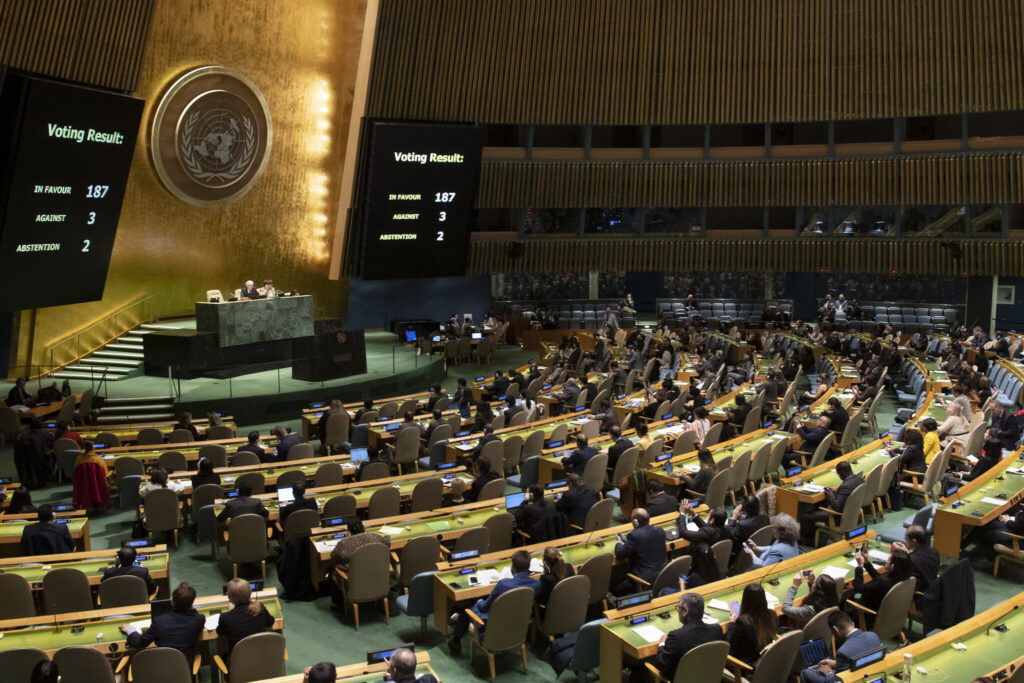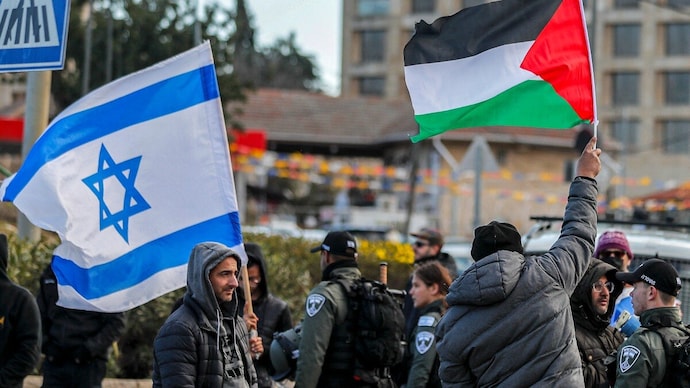Role of UN and Conflict Resolution Options in Israel-Palestine conflict

Role of Non-State Actors:
After World War II, the United Nations proposed a plan to address the situation in Palestine. In 1947, the UN passed Resolution 181, suggesting the termination of the Mandate and the partition of Palestine into two independent states – one for Palestinian Arabs and the other for Jews. Jerusalem was to be internationalized to address its unique significance to different groups. However, this proposal faced significant challenges and tensions. In the aftermath of the 1967 Six-Day War, Israel occupied the Gaza Strip, the West Bank, and East Jerusalem, which was subsequently annexed by Israel. This war led to a second exodus of Palestinians, with an estimated half a million displaced. To address this situation, the UN passed Security Council Resolution 242 in 1967, which outlined principles for achieving a just and lasting peace. It called for an Israeli withdrawal from the territories occupied during the conflict, a resolution of the refugee problem, and the end of all states of belligerency.
The 1973 hostilities resulted in Security Council Resolution 338, which called for peace negotiations between the parties involved. Subsequently, in 1974, the UN General Assembly reaffirmed the inalienable rights of the Palestinian people, including self-determination, national independence, sovereignty, and the right to return. The Assembly also established the Committee on the Exercise of the Inalienable Rights of the Palestinian people and granted observer status to the Palestine Liberation Organization (PLO) in the General Assembly and UN conferences. Efforts to find a peaceful settlement continued, with the Madrid Peace Conference in 1991. This conference aimed to achieve a peaceful resolution through direct negotiations, focusing on two tracks: negotiations between Israel and Arab states and between Israel and the Palestinians. These negotiations were based on Security Council Resolutions 242 and 338. In 2002, the Security Council affirmed a vision of two states, Israel and Palestine, as a potential solution to the conflict. The Arab League adopted the Arab Peace Initiative the same year, offering a comprehensive approach to resolving the crisis. In 2003, the Quartet – consisting of the United States, the European Union, Russia, and the United Nations – released a Road Map to a two-state solution. Additionally, an unofficial Geneva Peace Accord was promoted by influential Israelis and Palestinians in 2003.
Efforts continued with the Annapolis process in 2007-2008, but it failed to yield a permanent status agreement. The situation escalated in late 2008, leading to the Israeli ground operation “Cast Lead” in Gaza, which prompted UN Security Council Resolution 1860. On November 29, 2012, Palestine was granted non-member observer state status in the United Nations, a significant step in their international recognition. The General Assembly proclaimed 2014 as the International Year of Solidarity with the Palestinian People, further highlighting the ongoing concern for their rights and wellbeing. In 2016, the UN Security Council adopted Resolution 2334, which focused on Israeli settlements. This resolution reaffirmed the international community’s stance against Israeli settlements in the occupied territories and called for their cessation. The Israeli-Palestinian conflict remains a complex and ongoing issue, with various international efforts aimed at achieving a just and lasting peace in the region.

Resolutions:
The Israeli-Palestinian conflict is a complex and long-standing issue with deep historical, political, and religious roots. The resolutions proposed are with respect to the realist school of thought. While there is no one-size-fits-all solution, various approaches and proposals have been put forward over the years to resolve the conflict. Here are some of the possible conflict resolution options:
• Two-State Solution: This approach involves the creation of an independent and sovereign Palestinian state alongside the State of Israel, with agreed-upon borders based on the pre-1967 lines (with possible land swaps). This solution has been widely supported by the international community and has been the basis for numerous peace negotiations.
• One-State Solution: This approach suggests creating a single bi-national state where Israelis and Palestinians would have equal rights and representation. It would require addressing concerns about demographics, political power-sharing, and the protection of minority rights. However, this solution is considered less feasible due to significant challenges related to historical animosities and differing national aspirations.
• Confederation or Federation: This proposal suggests establishing a confederation or federation that allows for significant autonomy for both Israelis and Palestinians within a unified political framework. It would involve shared governance structures, cooperative institutions, and joint decision-making mechanisms to address common issues while maintaining separate national identities.
• Regional Approach: Some argue that resolving the Israeli-Palestinian conflict requires a broader regional approach involving neighboring Arab countries. This approach could include comprehensive peace treaties, economic cooperation, and the normalization of relations between Israel and Arab states. The 2020 Abraham Accords, which established diplomatic relations between Israel and several Arab countries, represent a step in this direction.
• Incremental/Conflict Management: Rather than seeking a comprehensive solution, this approach focuses on managing the conflict through confidence-building measures, small-scale agreements, and improving living conditions for Palestinians. The goal is to gradually reduce tensions and create an environment conducive to further negotiations.
• International Intervention: Increased involvement and mediation by the international community, including regional and global powers, can play a significant role in facilitating dialogue, negotiations, and the implementation of a resolution. This could include initiatives by the United Nations, the United States, the European Union, or other interested parties.
It is important to note that the Israeli-Palestinian conflict is highly complex, and any resolution requires a genuine commitment from both parties, compromises, and addressing the core issues that have fueled the conflict for decades. The path to peace will likely involve a combination of the above approaches and may require innovative ideas and adaptations to specific circumstances on the ground.